Results 10,001 to 10,010 of 12089
Thread: Anandtech News
-
10-29-19, 10:10 AM #10001
Anandtech: The NVIDIA GeForce GTX 1660 Super Review, Feat. EVGA SC Ultra: Recalibrati
Kicking off the first of a series of video card launches for this holiday season is NVIDIA, who is announcing their GeForce GTX 1660 Super. This is a relatively minor, but none the less interesting revision to the GTX 1660 family that adds a 1660 (vanilla) SKU with faster GDDR6 memory for improved performance. Along with the GeForce GTX 1650 Super (shipping in late November), these two cards are going to be the backbone of NVIDIA’s mainstream efforts to close out the year. And while NVIDIA’s other GTX 1660 cards aren’t going anywhere, as we’re going to see today, with its $229 price tag, the GDDR6-equipped GTX 1660 Super is pretty much going to make the other 1660 cards redundant.
More...
-
10-29-19, 02:16 PM #10002
Anandtech: Dynabook’s New Tecra A40: An Entry-Level 14-Inch Business Laptop
Dynabook, formerly Toshiba, has introduced its new entry-level business laptop that promises to offer an attractive balance between performance, portability, and price. The Tecra A40 is a typical ‘working horse’ type of notebook with a 14-inch Full-HD display, a mainstream CPU, a battery life of over 10 hours, and a three-year on-site warranty for select configurations in the US.
The Dynabook Tecra A40 is aimed at a wide audience and attempts to find the right balance of peculiarities to offer something for everyone. To that end, the notebook is equipped with a 14-inch Full-HD monitor with or without touch support. The mobile PC comes in an a modest chassis made of black plastic and featuring a slip resistant coating. The chassis is 19.9 mm thick and the computer weighs 1.47 kilograms (3.24 pounds), which is in line with other cheaper laptops.
At the heart of Dynabook’s Tecra A40 is Intel’s 8th Generation Core processor with up to four cores and UHD Graphics 620 that is paired with 8 GB of on-board DDR4-2400 memory (there is an additional SO-DIMM slot for upgrades) as well as a 256 GB M.2 PCIe SSD.
Being a mainstream notebook, Dynabook’s Tecra A40 offers a typical set of wireless interfaces and ports, including Wi-Fi 5, Bluetooth 4.2, one USB 3.1 Gen 1 Type-C port, two USB 3.1 Gen 1 Type-A connectors, one HDMI output, a microSD card reader, a 3.5-mm connector for headsets, and a power plug. Meanwhile, like many other business-oriented laptop, the Tecra A40 comes equipped with a spill-resistant keyboard, Synaptics’ SecurePad touchpad with integrated fingerprint reader, and a webcam with IR sensors for facial recognition. On the multimedia side of things, the laptop has stereo speakers and a microphone array.
As far as battery life is concerned, Dynabook equips its Tecra A40 mobile PCs with a quad-cell 42 Wh Li-ion battery that is rated for up to 11.5 hours battery life based on MobileMark 2014 productivity test according to the company.
Dynabook will start selling its Tecra A40 notebooks this November starting at $899.99. Besides the default configuration, the manufacturer will offer Build-to-Order machines featuring specifications defined by customers.Dynabook's Tecra A40-E A40-E1420
PMZ10U-01000XDisplay 14" 1920×1080
14" 1920×1080 with multitouchCPU Intel Core i5-8250U Graphics HD Graphics 620 (24 EUs) RAM 8 GB DDR4-2400 Storage 256 GB SSD (M.2, PCIe) Wi-Fi Wi-Fi 5 (802.11ac) Bluetooth Bluetooth 4.2 USB 3.0 2 × Type-A1 × Type-AGbE 1 × GbE Card Reader MicroSD Fingerprint Sensor Yes Other I/O HDMI, webcam with RGB + IR sensors, microphone, stereo speakers, audio jack Battery 42 Wh Thickness 19.9 mm (0.78 inches) Weight Starting at 1.47 kg (3.24 lbs) Price Starting at $899.99
Related Reading:
- Dynabook Updates Support Policies, Now Offers 3 & 4 Year Warranties For Some Models
- Dynaboook Reveals Tecra X50: A Lightweight 15.6-Inch Laptop with a 10+ Hrs Battery Life
- The Return of the Portégé: Dynabook Launches 2019 Portégé X30
- Toshiba's PC Products Rebranded to Dynabook
Source: Tecra
More...
-
10-29-19, 02:16 PM #10003
Anandtech: NVIDIA Reveals New SHIELD TV: Tegra X1+, Dolby Vision, Dolby Atmos
NVIDIA has introduced new versions of its SHIELD TV set-top-boxes featuring an all-new design as well as based on an improved Tegra X1+ SoC. The new STBs support all the features its predecessors do and add support for Dolby Vision HDR, Dolby Atmos audio, as well as a new AI-powered upscale algorithm. With the launch of the new devices NVIDIA somewhat changes concept of its STBs as they no longer come with a gamepad.
The new NVIDIA SHIELD TV devices use the company’s new Tegra X1+ SoC that is said to be 25% faster when compared to the original one launched over four years ago. The chip essentially has the same feature set and Maxwell graphics, so games developed with the original SoC in mind will work with the new one without any problems. Meanwhile, since the Tegra X1+ is made using a more advanced process technology, this allows NVIDIA to offer the new SHIELD TV in a more compact form-factor. At the same time, the new SoC is paired with 2 GB of RAM (down from 3 GB) as well as 8 GB of NAND flash storage (down from 16 GB previously), which can be expanded using a microSD card. The SHIELD Pro has 3 GB of RAM as well as 16 GB of NAND storage, but no longer has a hard drive.
NVIDIA made its new SHIELD TV smaller than the predecessor in a bid to better compete against compact streaming media device, such as Google’s Chromecast/Chromecast Ultra. From connectivity standpoint, the new STB features Wi-Fi 5, Bluetooth 5.0, a GbE port, an HDMI 2.0b output with HDCP 2.2, and a microSD card slot. Meanwhile, it no longer has USB 3.0 ports, possibly to save space and simplify design. Those who need USB 3.0 should buy the SHIELD Pro with two USB Type-A ports.
When it comes to decoding capabilities, the new SHIELD TV can decode H.265/HEVC, VP8, VP9, H.264, MPEG1/2, H.263, MJPEG, MPEG4, and WMV9/VC1 video. Meanwhile, the STB does not support AV1 as well as VP9.2 codecs because they are not widespread at the moment. The new SHIELD TV can playback 4Kp60 HDR, 4Kp60, Full-HD 60 fps content, and can upscale 720p and 1080p content to 4Kp30 using an AI-enhanced algorithm. It is unclear whether the algorithm relies on a new hardware block that is present only inside NVIDIA’s Tegra X1+, or uses a combination of hardware and software, which means that it could be enabled on previous-generation SHIELD TV consoles tooNVIDIA SHIELD STB Family SHIELD TV
(2019)SHIELD TV
Pro
(2019)SHIELD TV
(2017)SHIELD TV Pro
(2017)SHIELD Android TV
(2015)SoC Tegra X1+ Tegra X1
(4 × Cortex A57 + 4 × Cortex A53,
Maxwell 2 SMM GPU)RAM 2 GB 3 GB 3 GB LPDDR4-3200 Storage 8 GB NAND
microSD16 GB NAND
microSD
USB16 GB NAND
USB16 GB NAND
500 GB HDD
microSD
USB16 GB NAND
500 GB HDD (Pro only)
microSD
USBDisplay Connectivity HDMI 2.0b with HDCP 2.2 (4Kp60, HDR) Dimensions Height 40 mm
1.57 inch? 98 mm
3.858 inch130 mm
5.1 inchWidth 40mm
1.57 inch? 159 mm
6.26 inch210 mm
8.3 inchDepth 165 mm
6.5 inch? 26 mm
1.02 inch25 mm
1 inchWeight 137 grams ? 250 grams 654 grams Power Adapter integrated ? 40 W I/O Wireless 2x2 802.11a/b/g/n/ac
Bluetooth 4.1/BLEUSB - 2 × USB 3.0 2 × USB 3.0
1 × micro-USB 2.0IR - - - IR Receiver Ethernet Gigabit Ethernet Launch Product Bundle Shield Remote Shield Controller
Shield RemoteShield Controller Launch Price $149.99 $199.99 $199.99 $299.99 Basic: $199.99
Pro: $299.99
The new SHIELD TV STBs come with a redesigned SHIELD remote with improved ergonomics and more buttons. The unit has a built-in microphone for Google Assistant and Amazon Alexa; motion-activated backlit buttons; Bluetooth connectivity to connect to the player; and an IR blaster to control volume and power on TVs, soundbars or receivers.NVIDIA's 2019 SHIELD TV STBs Video 4K HDR at 60 FPS H.265/HEVC 4K at 60 FPS VP8, VP9, H.264, MPEG1/2 1080p at 60 FPS H.263, MJPEG, MPEG4, WMV9/VC1 HDR HDR10, Dolby Vision Containers Xvid/ DivX/ASF/AVI/MKV/MOV/M2TS/MPEG-TS/MP4/WEB-M Audio Audio Support AAC, AAC+, eAAC+, MP3, WAVE, AMR, OGG Vorbis, FLAC, PCM, WMA, WMA-Pro, WMA-Lossless, Dolby Digital Plus, Dolby Atmos, Dolby TrueHD (pass-through), DTS-X (pass-through), and DTS-HD (pass-through) High-Resolution Audio Playback up to 24-bit/192 kHz over HDMI and USB High-Resolution Audio Upsample up to 24-bit/192 kHz over USB
Being based on Android TV/Android 9.0 (Pie) platform, the SHIELD TV ships with a variety of content deliver apps, including Netflix, YouTube, Amazon Prime Video, Amazon Music, Vudu, Google Play Movies & TV, Plex, Google Play Games, NVIDIA Games, and Google Games. End-users may install additional apps themselves if they need to.
Because of the simplified design and the lack of bundled gamepad, the new NVIDIA SHIELD TV media players are cheaper than their predecessors: the base model costs $149.99 (down from $199.99), whereas the Pro model is priced at $199.99 (down from $299.00).
Related Reading:
- SHIELD TV Now Supports 120 Hz Refresh, Ups Wi-Fi Bandwidth for GeForce NOW
- NVIDIA Unifies GeForce NOW Service Across PCs and SHIELD TV STBs: 200+ Games Supported
- NVIDIA Temporarily Slashes $30 Off the SHIELD TV: Now Staring at $149
- NVIDIA Releases Android 7.0 Update for 2015 SHIELD TV, Adds Amazon Video App
- NVIDIA Launches SHIELD TV: Smart Home Functionality, More 4K HDR Streaming Services
- NVIDIA SHIELD Android TV Console Adds Support for Vudu, HDR and 4Kp60 Content
Source: NVIDIA
More...
-
10-29-19, 10:42 PM #10004
Anandtech: AMD Q3 FY 2019 Earnings Report: Party Like It’s 2005
Today AMD announced their third quarter earnings for the 2019 fiscal year, and AMD has not seen revenue like this for a long time – in fact this is the highest quarterly revenue since 2005 for the company. AMD’s revenue jumped 9% year-over-year to $1.8 billion, and at least as importantly, AMD had gross margins of 43%, which is up 3% over last year, and the highest margins they’ve seen since 2012. Operating income was up 24% to $186 million, and net income was up 18% to $120 million. This resulted in earnings-per-share of $0.11, up 22% from Q3 2018.
This is the first full quarter for AMD since the launch of their 7 nm Zen 2 processor, and AMD attributes the revenue growth to the Computing and Graphics, but offset by lower revenue in Enterprise, Embedded, and Semi-Custom. Revenue for the Computing and Graphics segment was up 36% year-over-year to $1.28 billion, thanks to both increased volume and Average Selling Price (ASP) for Ryzen on the desktop. GPU ASP also increased year-over-year thanks to higher channel sales. The Computing and Graphics segment had operating income of $179 million, which is up 79% from a year ago.AMD Q3 2019 Financial Results (GAAP) Q3'2019 Q2'2019 Q3'2018 Revenue $1801M $1531M $1653M Gross Margin 43% 41% 40% Operating Income $186M $59M $150M Net Income $120M $35M $102M Earnings Per Share $0.11 $0.03 $0.09
Enterprise, Embedded, and Semi-Custom had revenue of $525 million for the quarter, down 27% year-over-year, mostly attributed to semi-custom sales, which makes sense since a large chunk of that is for the AMD APU powering both the Sony PlayStation 4 and Microsoft Xbox One, both of which are scheduled for new models in the next calendar year. Offsetting this was higher EPYC processor sales, although not enough of an offset to cover the semi-custom drop. Operating income for this segment was $61 million, down 29% from a year ago.AMD Q3 2019 Computing and Graphics Q3'2019 Q2'2019 Q3'2018 Revenue $1276M $940M $938M Operating Income $179M $22M $100M
Finally, AMD’s All Other category reported an operating loss of $54 million, which is a 50% larger loss than a year ago.AMD Q3 2019 Enterprise, Embedded and Semi-Custom Q3'2019 Q2'2019 Q3'2018 Revenue $525M $591M $715M Operating Income $61M $89M $86M
AMD had some big news in Q3, with multiple design wins for both Ryzen and EPYC, including Cray’s Shasta supercomputer leveraging 2nd Generation EPYC, and AMD getting a big design win in the PC space with the Microsoft Surface Laptop 3.
Looking ahead to Q4, AMD is expecting revenue of $2.1 billion, plus or minus $50 million, with a Non-GAAP gross margin of approximately 44%.
Source: AMD Investor Relations
More...
-
10-30-19, 10:54 AM #10005
Anandtech: SiFive Announces First RISC-V OoO CPU Core: The U8-Series Processor IP
In the last few year’s we’ve seen an increasing amount of talk about RISC-V and it becoming real competitor to the Arm in the embedded market. Indeed, we’ve seen a lot of vendors make the switch from licensing Arm’s architecture and IP designs to the open-source RISC-V architecture and either licensed or custom-made IP based on the ISA. While many vendors do choose to design their own microarchitectures to replace Arm-based microcontroller designs in their products, things get a little bit more complicated once you scale up in performance. It’s here where SiFive comes into play as a RISC-V IP vendor offering more complex designs for companies to license – essentially a similar business model to Arm’s – just that it’s based on the new open ISA.
Today’s announcement marks a milestone in SiFive’s IP offering as the company is revealing its first ever out-of-order CPU microarchitecture, promising a significant performance jump over existing RISC-V cores, and offering competitive PPA metrics compared to Arm’s products. We’ll be taking a look at the microarchitecture of the new U8 Series CPU and how it’s built and what it promises to deliver.
More...
-
10-30-19, 09:22 PM #10006
Anandtech: Cray Unveils ClusterStor E1000 Storage Arrays: HDDs and SSDs, 1.6 TB/s per
Cray on Wednesday introduced its new ClusterStor E1000 highly-scalable storage system, which is designed for next generation exascale supercomputers as well as future datacenters that will require massive storage performance while running converged workloads. The ClusterStor E1000 uses Cray’s new global file storage system as well as a variety of storage media, including all-flash setups and mixes of hard drives and SSDs.
From a hardware point of view, Cray’s ClusterStor E1000 relies on a proprietary highly-parallel internal architecture, which in turn is based around uses purpose-engineered AMD EPYC (Rome)-based PCIe 4.0 system with 24 NVMe U.2 SSDs. The cluster then connects to an external HPC system using Cray’s 200 Gbps Slingshot, Infiniband EDR/HDR, or 100/200 Gbps Ethernet. The key peculiarity of the ClusterStor architecture is its flexibility and scalability: it can use a wide variety of hardware and storage media to offer the a range of different performance and capacity options. The highly-parallel architecture also enables ClusterStor E1000 to be used for converged workloads without any performance degradation.
On the software side of things, the ClusterStor E1000 uses Cray's next-generation global file storage system as well as their ClusterStor Data Services system, which automatically aligns the data flow in the file system with the workflow by shifting I/O operations between different tiers of storage as appropriate. At all times, applications ‘think’ that they are dealing with a high-performance all-flash array, whereas ClusterStor E1000 uses both SSDs and HDDs to offer high-enough levels of performance and maximum storage capacity. The CDS supports scripted, scheduled or policy driven placement of data to provide optimal performance for different workloads.
Cray’s entry-level ClusterStor E1000 will offer about 60 TB of usable capacity while providing around 30 GB/s throughput. When scaled to its highest performance levels, the ClusterStor E1000 will deliver up to 1.6 TB/s sequential read/write speed and up to 50,000 IOPS per rack. Clients with more than one rack will naturally get higher performance.
For general customers, Cray’s ClusterStor E1000 systems will be available starting Q1 2020. Pricing will depend on exact configurations. Specially configured ClusterStor E1000 external storage systems will be used by Cray’s upcoming Aurora, Frontier, and El Capitan exascale supercomputers, which will feature over 1.3 ExaBytes of total storage space. Furthermore, the National Energy Research Scientific Computing Center (NERSC) will use a 30 PB all-flash ClusterStor E1000.
By launching its new ClusterStor E1000 storage platform, Cray concludes a complete redesign of its product portfolio that also encompasses Shasta supercomputers, Slingshot interconnects, and software.
Related Reading:
- Hewlett Packard Enterprise to Acquire Cray for $1.3 Billion
- US Dept. of Energy Announces Frontier Supercomputer: Cray and AMD to Build 1.5 Exaflop Machine
- Intel’s Xeon & Xe Compute Accelerators to Power Aurora Exascale Supercomputer
- Cray Adds AMD EPYC Processors to CS500 Cluster Supercomputers
Source: Cray
More...
-
10-30-19, 09:22 PM #10007
Anandtech: Samsung Launches Galaxy Book Flex: Convertibles with QLED Displays & Ice L
In addition to announcing its Galaxy Book Ion notebooks, Samsung this week also introduced its convertible Galaxy Book Flex laptops. Unlike their classic counterparts, the Galaxy Book Flex PCs use Intel’s 10nm Ice Lake processors, and offer a slightly different feature set to better suited to convertibles.
Set to be available in 13.3-inch and 15.6-inch versions, Samsung’s Galaxy Book Flex convertibles come in an CNC-machined aluminum chassis with a proprietary 360-degree hinge as well as a Royal Blue finish. Typical for 2-in-1 class machines, the Galaxy Book Flex are slightly heavier when compared to conventional laptops of the same size: the 13.3-inch model weighs 1.15 kilograms, whereas the 15.6-inch model weighs starting from 1.52 kilograms. The mobile PCs are equipped with a quantum dot-enhanced QLED touch-enabled LCD featuring 600 nits brightness along with a wider-than-sRGB color gamut. Furthermore, the machines support Samsung’s Wireless PowerShare capability to charge smartphones and other Qi-compatible devices.
As noted above, Samsung’s Galaxy Book Flex notebooks are based on Intel’s 10th Generation Core processors (Ice Lake) with UHD or Iris Plus graphics, and are accompanied by up to 16 GB of LPDDR4X memory, an NVMe/PCIe SSD with capacities up to 1TB, and an optional NVIDIA GeForce MX 250 discrete GPU with 2 GB of memory in case of the 15.6-inch model.
Being a Project Athena convertible PCs, the Galaxy Book Flex support modern connectivity and multimedia technologies, though you won't find older connectors such as GbE, USB Type-A, or DisplayPort/HDMI. On the wireless side of things, the machines offer Wi-Fi 6 as well as Bluetooth. The wired department offers two Thunderbolt 3-enabled USB-C ports, one regular USB 3.0 port, a microSD/UFS card reader, and a 3.5-mm audio jack for headsets. Samsung’s notebook also comes with a fingerprint reader, a 720p webcam, a microphone array, and stereo speakers co-designed with AKG and enhanced with an amplifier.
Samsung did not touch upon prices of its Project Athena-verified convertibles, but said that the notebooks will be available this December in select countries.General Specifications of Samsung's Galaxy Book Flex Galaxy Book Flex
13.3-inchGalaxy Book Flex
15.6-inchLaunch Q4 2019 Q4 2019 Display Type 13.3" 15.6" Resolution 1920×1080 Brightness 600 nits 600 nits CPU 10th Gen Intel Core
(Ice Lake)Graphics Intel UHD Graphics
Intel Iris Plus GraphicsIntel UHD Graphics
Intel Iris Plus Graphics
Optional: NVIDIA GeForce MX 250 2 GBMemory up to 16 GB DDR4 Storage SSD primary up to 1 TB PCIe/NVMe SSD Card UFS + microSD card reader Wireless Connectivity 2x2 Wi-Fi 6 (Gig+)
BTThunderbolt 3 2 × Thunderbolt 3 USB 1 × USB 3.0 Type-C Display Outputs - Webcam 720p webcam Battery 69.7 Wh Audio Stereo speakers
with Smart Amp
1 × microphone
1× TRRS jackDimensions Width 302.6 mm | 11.91" 355 mm | 13.97" Depth 202.9 mm | 7.98" 227.2 mm | 8.94" Thickness 12.9 mm | 0.5" 14.9 mm | 0.58" Weight 1.15 kg | 2.53 lbs 1.52 kg | 3.35 lbs
1.57 kg | 3.46 lbs (w/ dGPU)
- Intel Unveils ‘Engineered for Mobile Performance’ Badge for Project Athena Program
- Samsung Announces Always-Connected Galaxy Book S Laptop with Snapdragon 8cx
- Samsung Unveils Galaxy Book2: 12-Inch, Snapdragon 850 with X20 LTE, 20 Hrs
- Samsung Unveils 2019 Notebook 9 Pen 13 & 15
- Samsung Notebook 7 Spin 13.3-inch Convertible Gets Quad-Core i5 & SSD, Loses Weight
- CES 2019: Samsung Announces The Notebook Odyssey
- CES 2019: Samsung Launches The Notebook 9 Pro And Notebook Flash
Source: Samsung
More...
-
10-31-19, 09:14 AM #10008
Anandtech: Intel Launches Low-End Comet Lake CPUs: Pentium Gold 6405U & Celeron 5205U
Intel has quietly added two new inexpensive processors into its Comet Lake-U lineup. The Pentium Gold 6405U and Celeron 5205U CPUs will be used for entry-level thin-and-light laptops that need one of the latest-generation processors, but are not designed for performance-demanding workloads.
Intel’s Pentium Gold 6405U and Celeron 5205U are dual-core processors that run at 2.4 GHz and 1.9 GHz, respectively. Both CPUs have TDPs of 15 Watts – the same as the rest of the Comet Lake-U family – and include 2 MB of L3 cache, Intel UHD Graphics, a dual-channel DDR4/LPDDR3 memory controller, and feature 12 PCIe 2.0 lanes for expansion. Both SKUs are considerably cheaper than the rest models in the Comet Lake series (which start at $281): the Pentium Gold 6405U processor carries a $161 recommended customer price, whereas the Celeron 5205U costs $107 when purchased in 1000-units quantities.
Up until now, Intel’s Comet Lake-U family included only four CPUs, three of which were aimed at premium laptops. The addition of considerably cheaper processors allows Intel to address more market segments with its Comet Lake products by equipping its partners to build cheaper systems using the latest motherboard designs.Intel Comet Lake-U SKUs AnandTech Cores Base GHz 1C Turbo
GHzAC Turbo
GHzL3
CacheTDP
PL1IGP
UHDIGP
MHzDDR4 LPDDR4X Cost i7-10710U 6C/12T 1.1 4.7 3.9 12 MB 15W 620 1150 2666 2933 $443 i7-10510U 4C/8T 1.8 4.9 4.3 8 MB 15W 620 1150 2666 2933 $409 i5-10210U 4C/8T 1.6 4.2 3.9 6 MB 15W 620 1100 2666 2933 $297 i3-10110U 2C/4T 2.1 4.1 3.7 4 MB 15W 620 1000 2666 2933 $281 Pentium 6405U 2C/4T 2.4 - - 2 MB 15W 610? 950 2400 ? $161 Celeron 5205U 2C/2C 1.9 - - 2 MB 15W 610? 900 2400 ? $107
Otherwise, as is almost always the case for low-end Core SKUs, these are presumably salvage chips from Intel's operations. The new Pentium and Celeron chips are clocked lower than the Core i3-10110U, allowing Intel to put to work silicon that otherwise wouldn't have been usable as a Core i3. Which for Intel is particularly important at a time where demand for inexpensive U-series mobile CPUs is running high, helping the company please its partners who have suffered from tight supply of Intel’s 14 nm processors in the recent quarters.
Related Reading:
- Intel Launches Comet Lake-U and Comet Lake-Y: Up To 6 Cores for Thin & Light Laptops
- Intel Boosts 14nm Capacity 25% in 2019, But Shortages Will Persist in Q4
- Lenovo Launches ThinkPad X1 Carbon Gen 7: Thinner, Lighter, Comet Lake Inside
- Lenovo’s 2019 ThinkPad X1 Yoga: An Ultralight Convertible with Comet Lake
Source: Intel ARK (via SH SOTN)
More...
-
10-31-19, 11:00 AM #10009
Anandtech: Razer Cuts Bluetooth Audio Lag with Hammerhead Wireless Earbuds
Razer this year has been on the rampage of new product announcements, bringing dozens of devices to the market and entering new categories. Adding to the company's lineup, this week the company introduced its Hammerhead wireless earbuds, which promise to reduce the audio lag that Bluetooth headphones are typically known for. The headset is compatible with all Bluetooth devices and supports touch controls to control calls, music, and virtual assistants.
Razer’s Hammerhead True Wireless earbuds use a 13-mm driver with a 20 Hz – 20 KHz frequency response, a 32 ± 15% Ohms impedance, and a 91 ± 3 dB @ 1 kHz sensitivity; as well as an omnidirectional MEMS microphone with a -42 ± 3 dB sensitivity, a ≥55 dB signal-to-noise ratio, and a 300 Hz – 5 kHz frequency response. Each earbud is equipped with a 275 mAh rechargeable Li-Po battery, with Razer touting a battery life of up to three hours.
The headset connects to smartphones (or other devices) using ‘a customized ultra-low latency’ Bluetooth 5.0 connection that reduces lag in Gaming Mode (enabled in a special app that accompanies the product) down to 60 ms. Low latency is particularly useful for playing games and watching movies as audio that is lagging behind video is clearly annoying. Razer does not say whether the fast BT connection is enabled by a special piece of hardware, though it looks like the manufacturer has customized its BT-enabling chip and radio using firmware tweaks.
Form-factor wise, the Hammerhead are black in-ear earbuds with silicon ear sleeves that are IP4X rated for sweat and splash protected. The earbuds are not meant to block all the environment noises and they also do not feature active noise cancellation, so they perform like the majority of headsets available today. As for controls, the earbuds can detect single press, double tap, triple tap, triple tap & hold last tap, and hold for two seconds gestures to control various aspects of their operation. The gestures can be customized in a companion app for Apple’s iOS and Google’s Android operating systems.
The Hammerhead True Wireless headset comes in a charging case that can charge it for up to four times, enabling up to 16 hours of total battery life, according to the manufacturer. The case connects to its power brick using a USB Type-C cable.
Razer’s Hammerhead wireless earbuds are now available directly from the company for $99.99 in the US and €119.99 in Europe.
Related Reading:
- Apple Unveils AirPods Pro: A New Design with Active Noise Cancellation
- The Sennheiser GSP670 Wireless Gaming Headset Review: Cutting The Cord
- Apple Launches 2nd Gen AirPods: Longer Talk Time & Hands-Free ‘Hey Siri’
- Sony’s Open-Ear Xperia Ear Duo Available for Pre-Order, Set to Ship in Late May
- Razer Unveils Optical Laptop Keyboard
- Razer’s Raptor 27 Gaming Monitor Now Available: QHD with 144 Hz FreeSync & HDR400
Source: Razer
More...
-
10-31-19, 11:00 AM #10010
Anandtech: The Intel Core i9-9900KS Review: The 5 GHz Consumer Special
Intel likes 5.0 GHz processors. The one area where it claims a clear advantage over AMD is in its ability to drive the frequency of its popular 14nm process. Earlier this week, we reviewed the Core i9-9990XE, which is a rare auction only CPU but with 14 cores at 5.0 GHz, built for the high-end desktop and high frequency trading market. Today we are looking at its smaller sibling, the Core i9-9900KS, built in numbers for the consumer market: eight cores at 5.0 GHz. But you’ll have to be quick, as Intel isn’t keeping this one around forever. Read on for the full review.
More...
Thread Information
Users Browsing this Thread
There are currently 19 users browsing this thread. (0 members and 19 guests)





 Quote
Quote

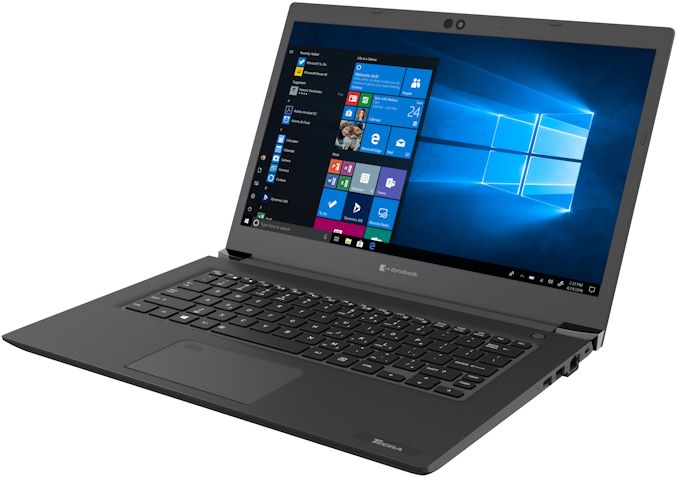
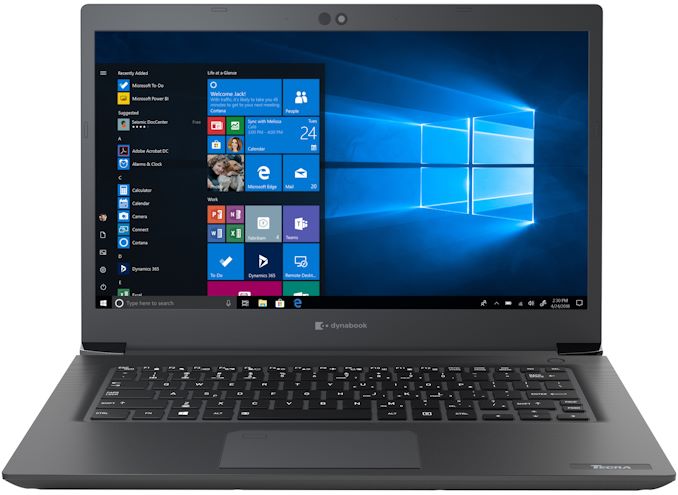

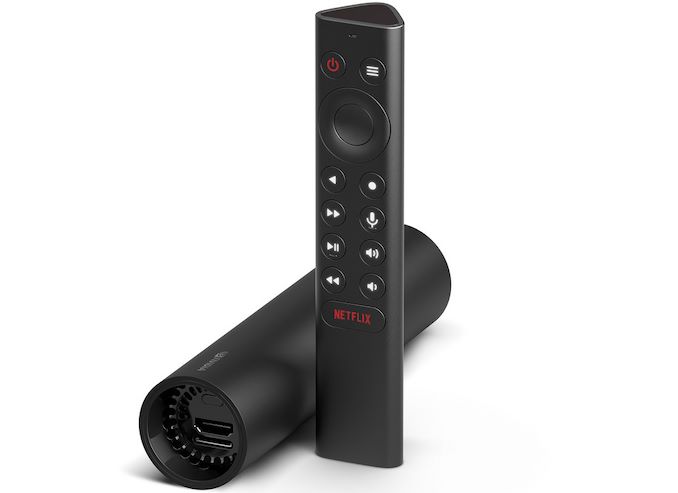

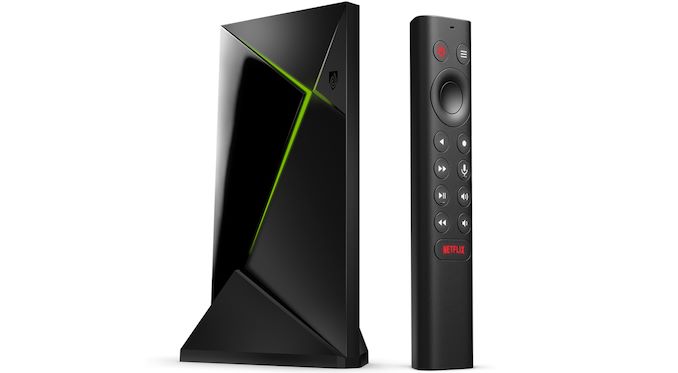

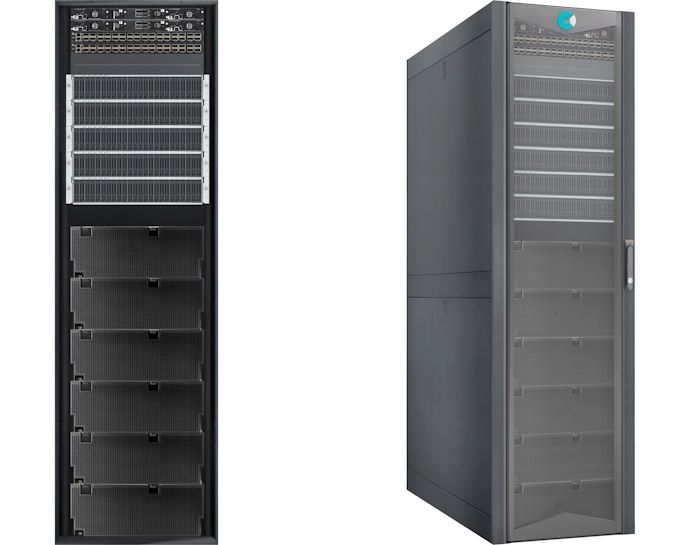
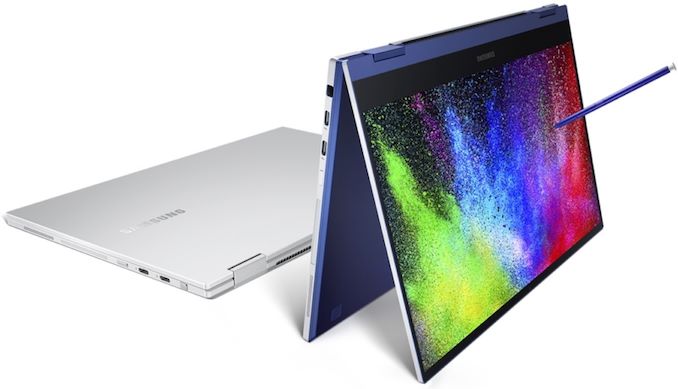

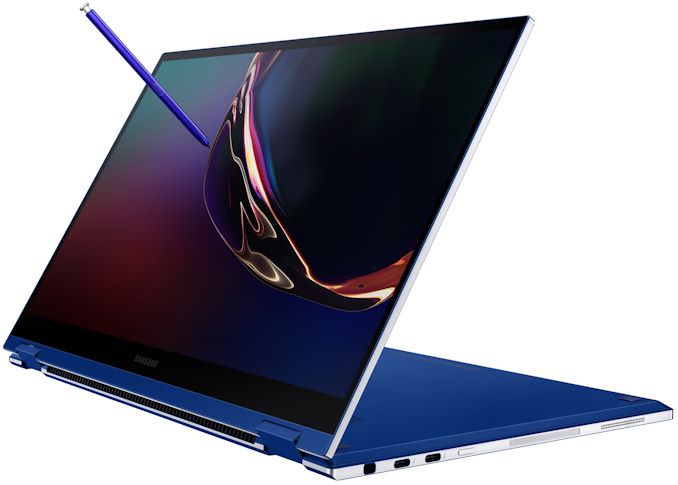
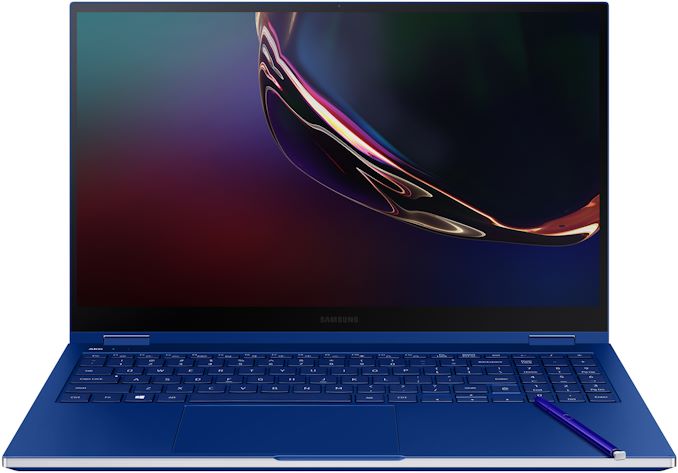
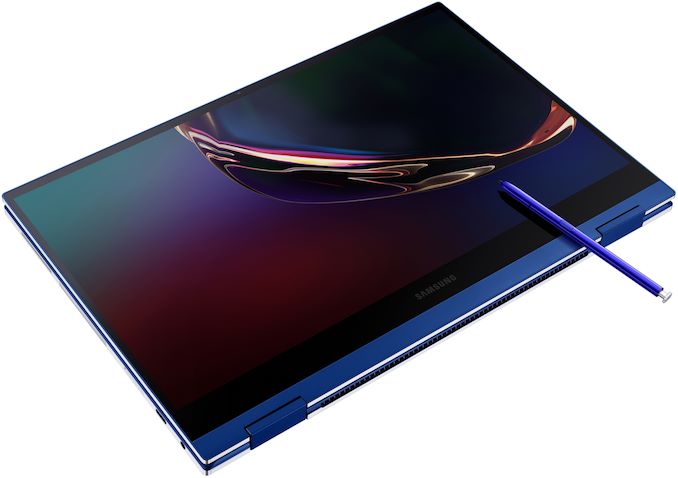

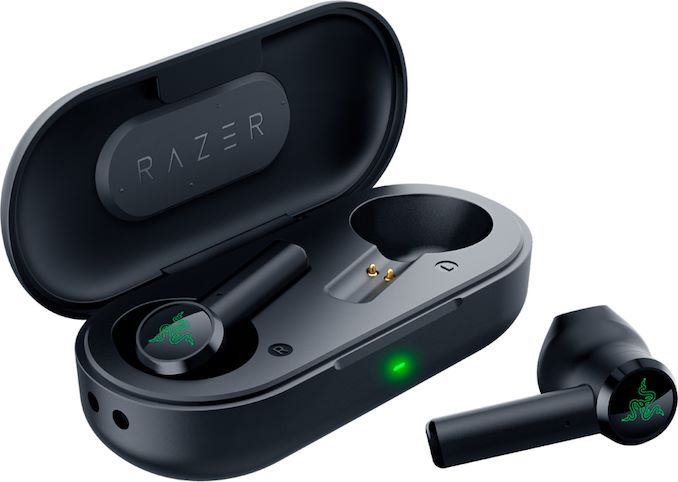

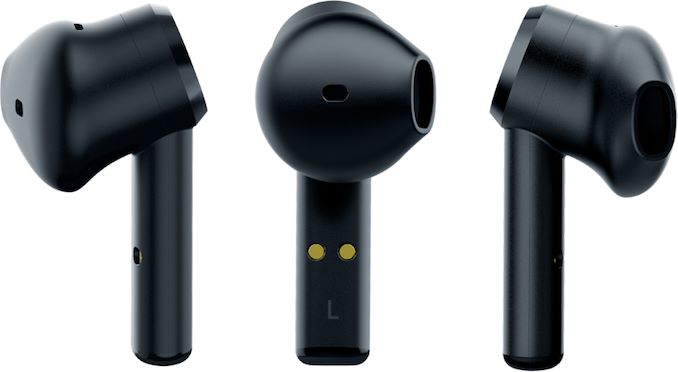
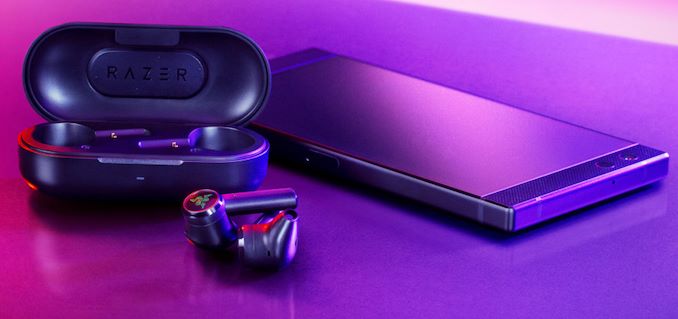
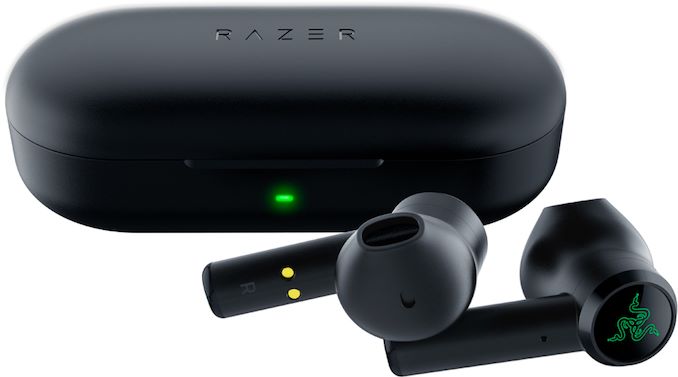
















Bookmarks